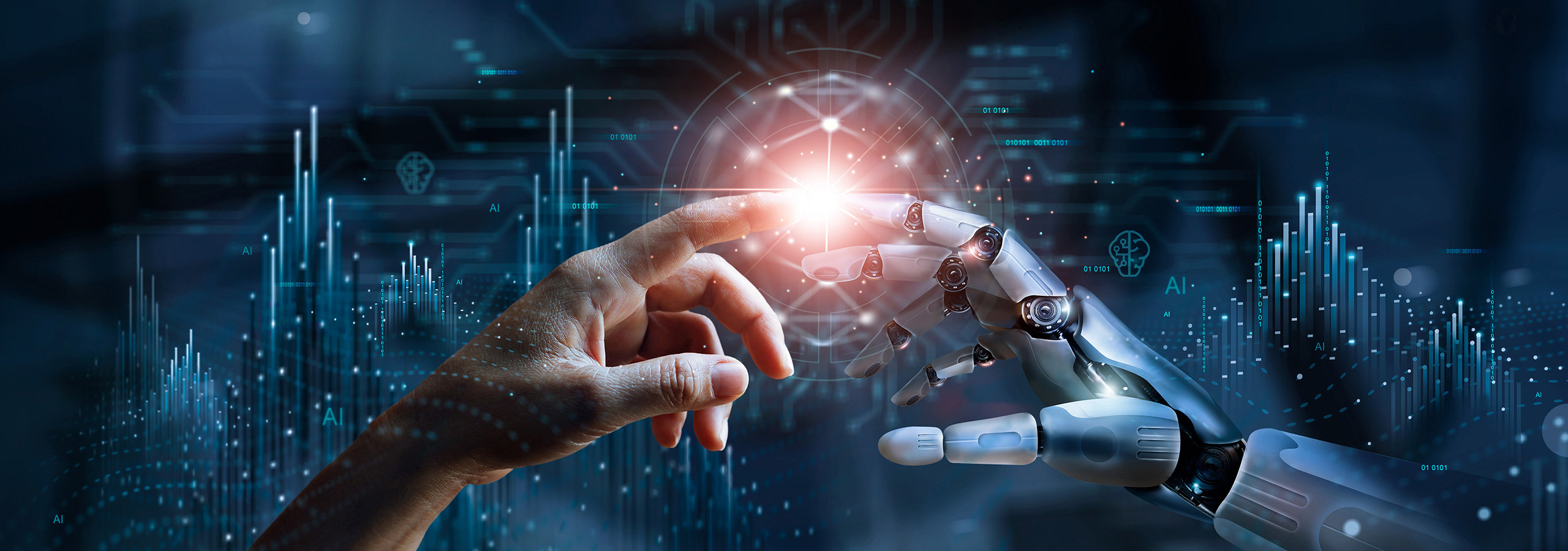Artificial Intelligence is today a key foundation for digital progress and computing. But how does it work? What opportunities does it offer? Why is it useful for businesses? In this article, we explain everything about Artificial Intelligence: how it works, its uses, and its limits.
To work with companies developing services in TECH with Artificial Intelligence, contact Bessand.
1. How Artificial Intelligence Works
Artificial Intelligence works through algorithms that process large amounts of data. It relies on a machine learning system that allows it to memorize information and train itself to recognize patterns (e.g., image recognition to identify cat photos when typing “cat” in the search bar).
There are several types of machine learning that allow machines to learn from data:
- Supervised learning, which allows finding elements based on what the AI has already seen.
- Unsupervised learning, which allows creating structures from data.
- Reinforcement learning, which trains the AI through a system of rewards and penalties to make the best decisions.
The second step is Deep Learning, an in-depth learning process that works somewhat like the human brain. It relies on artificial neurons to analyze data and perform complex tasks. Some AI systems can even decide on their own to suggest content or recognize faces.
Other AI Technologies:
- Natural Language Processing (NLP): This technology allows machines to understand and analyze human language. It is used in voice assistants like Siri or Alexa and in translation tools like Google Translate.
- Image and face recognition: AI can examine and interpret photos or videos. It is found in facial recognition systems. This technology allows machines to interact better with humans.
2. The Evolution of Artificial Intelligence from the Past to Today
In 1950, Alan Turing, a British mathematician and cryptologist, proposed the idea that a machine could “imitate” human intelligence, which laid the foundations for Artificial Intelligence. Subsequently, AI emerged as an academic discipline. Between 1950 and 1960, researchers began creating programs that could solve problems. AI was not perfect and still made mistakes, but this paved the way for the development of the concept. From the 21st century onwards, algorithms, more powerful computing capabilities, and access to more data allowed AI to be trained for more complex tasks.
Today, AI is an integral part of our daily lives. Whether it’s when we interact with our voice assistant, perform an internet search, or are exposed to targeted ads, its impact is already felt and influences technological evolution.
Need recruitment to develop in the field of Artificial Intelligence, or looking to work in this sector? Contact Bessand, we have what you need.
3. Applications of Artificial Intelligence by Sector
AI helps companies accelerate innovation, improve customer experience, while reducing costs. In a constantly evolving market, companies use AI to remain competitive. Here are some examples of sectors where AI is used and how it is applied:
- Health and Medicine:
- AI helps doctors analyze medical records to make more accurate diagnoses and choose the best treatments.
- AI-assisted robots are used in surgery, and smart prosthetics help amputees regain mobility.
- Virtual assistants help manage records and organize appointments, allowing caregivers to focus on patients.
- Finance and Banking:
- AI analyzes market trends to help make better financial decisions.
- It monitors transactions in real-time to detect and stop potential fraud.
- AI-assisted virtual advisors respond to client inquiries and help them manage their money.
- Retail (stores, shops) or online (e-commerce):
- AI prevents potential stock issues.
- It recommends products based on customer preferences.
- It collects data on customer behavior and helps prevent risks in stores.
- Automated checkout systems simplify and speed up the payment process.
- It facilitates client account creation after validating information.
- It automates sales appointments based on AI-driven sales forecasts.
- Industries, Aerospace, Electronics, Textile:
- AI predicts equipment failures to reduce unexpected downtime.
- AI improves production efficiency and product quality through smart robots.
- Automobile, Transport, and Logistics:
- AI enables secure navigation for autonomous vehicles, reducing accidents and traffic jams.
- Intelligent systems optimize urban traffic by adjusting traffic lights in real-time.
- Agriculture:
- Autonomous tractors for plowing, seeding, and harvesting.
- Drones for monitoring crops and optimizing pesticide use.
- Automated irrigation systems for efficient watering.
- Milking robots to improve dairy production.
- AI for quality control of agricultural products.
Bessand works with companies in the Artificial Intelligence sector, if you want to learn more.
4. Challenges of Artificial Intelligence
Despite its advances, AI still faces some drawbacks that hinder its development:
- High cost: due to the complexity of machines and resources. However, some companies now assist organizations in integrating AI and choosing a model suited to their needs.
- Lack of initiative: AI is devoid of emotions and moral values. It only executes what it has been programmed to do and lacks judgment beyond the integrated knowledge.
- Impact on employment: AI can lead to higher unemployment. Jobs such as that of a translator have already been impacted by AI advancements.
- Ethical and societal issues: Some states exploit these technologies to surveil their populations on a large scale, which poses a risk to individual freedoms.
Artificial Intelligence represents significant technological progress; however, it is essential to identify the risks to ensure its responsible development.
To maximize the usefulness of Artificial Intelligence, rather than replacing humans, we must ensure it enhances innovation and productivity in a responsible manner.



